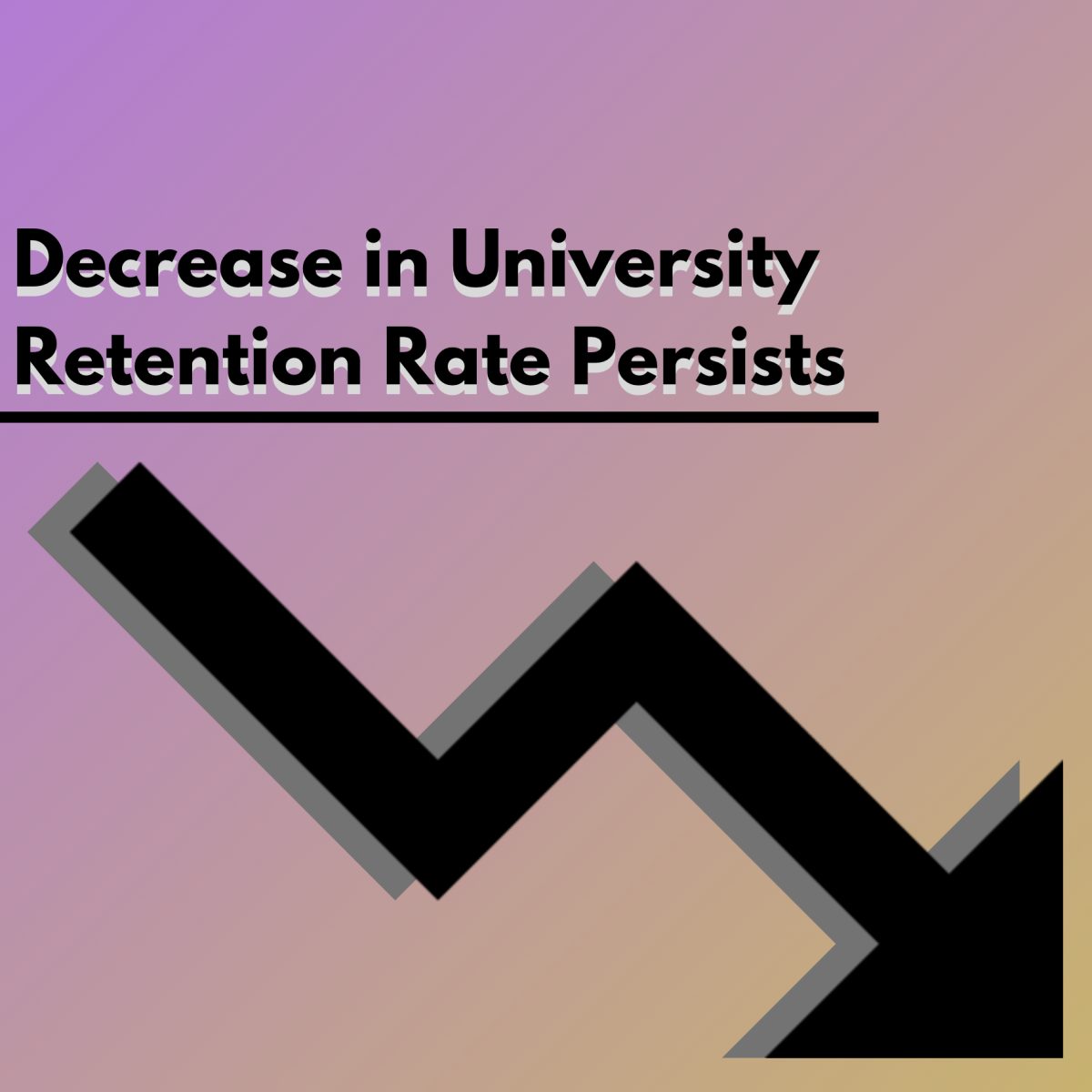Since 2016, California Lutheran University’s student retention rate has dropped by nearly 6%, according to Cal Lutheran’s retention data. Matt Ward, vice president for enrollment management and student success, said the university is putting plans in place to increase retention rates and is actively trying to determine what factors contributed to this decline.
Ward said that in 2016, the school had an 84% retention rate, as there were 638 first-year students and 104 of them did not return for their sophomore year. Ward also shared detailed reporting on the 2023 school year, in which the retention rate decreased to 78.8% as there were 575 first-year students and 122 of them did not return for their sophomore year.
“I was a little bit disappointed in our number this year. My hope was that we were going to be moving back towards the 82% to 83% retention rate with the fall ‘23 group, but this gives you a sense of where we’ve been and what the numbers look like from the first to second year,” Ward said.
Ward also said how the university places a high priority on helping first-year students as this is a period of major life change, in regards to students’ academics, financial challenges and social lives.
“We’re constantly evaluating the university around how we’re offering an experience that’s going to be valued by students,” Ward said.
Leigh Fine, senior director of student success, said the two key factors that he believes cause retention rates to decline are the increase in financial and health related concerns. Fine also said rising interest rates in California resulted in students taking out less loans.
“We are trying to identify other streams, other donor services, we’re trying to explore ways to make loans more accessible and affordable. We’re trying to connect students with financial aid,” Fine said.
Ward said the university is working on ways to help students both academically and financially, hoping to make it easier for students to afford to pay for their tuition.
“Some of the things that are more challenging, is trying to identify the patterns that emerge that we weren’t necessarily anticipating,” Ward said.
According to Pepperdine’s Office of Institutional Effectiveness, its “first-time, full-time” retention rate of the fall 2022 cohort is 86%. Comparing Pepperdine University’s retention rate to Cal Lutheran, it is substantially higher, as Cal Lutheran’s is 78.8%.
According to Chapman University’s Fact Sheet 2022-2023, its retention rate is 91%, sitting higher than both Pepperdine and Cal Lutheran’s.
Ward said that there have been new innovations that have been introduced to help students connect with peers and faculty through different academic activities. According to Ward, this has been a successful initiative that recognizes students in the STAR (Students Taking Academic Responsibility) program.
“If students go on academic probation, they are required to be part of the STAR program,” Ward said. “One of the things that we learned is students faced with that requirement individually sometimes will be discouraged or feel like they are isolated. So we developed a class for students where they are kind of working as a cohort.”
According to Fine, in order to better understand how freshmen feel about any possible improvements, it is imperative that a first-year survey is distributed to them in order to assist in properly gathering data. Fine also said the outcome of this data would then aid in spearheading any changes that would then take place on campus to better the overall university campus life.
“We want to keep students here and we want them to get a paper in their hand when they leave but we also want them to thrive and not just survive when they’re here,” said Fine. “We want students to have a good experience, we want them to feel connected with the community.”












